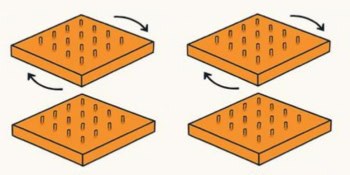Researchers in Japan have discovered a new way to strengthen steel. Kota Sawada and colleagues at the National Institute for Materials Science in Tsukuba have made a steel that is a hundred times stronger than the strongest ‘creep-resistant’ steel available today. The method could lead to the economical manufacture of large-scale steel components for high-temperature applications (M Taneike et al. 2003 Nature 424 294).
Creep is a type of deformation that weakens metals and alloys when they are exposed to stress and high temperatures. To strengthen steel against creep, engineers disperse small particles – mostly oxides – throughout the metal, but this technique is expensive and not suitable for large-scale manufacturing. Moreover, the particles ‘coarsen’ with time and this reduces their strengthening effect.
In many strengthened steels, the creep rate increases abruptly after a certain period and the sample fractures. This so-called time-to-rupture depends on the amount of carbon in the steel. By adding just 0.002% carbon to martensitic steel that already contains 9% chromium, Sawada and colleagues were able to increase the time-to-rupture at 923 Kelvin by a factor of 100 over the strongest creep-resistant steel currently available (which contains about 0.08% carbon).
Using transmission electron microscopy, the Tsukuba team observed that its sample contained a large number of fine particles, between 5 and 10 nanometres in size. In contrast, conventional strengthened steels contain much larger particles, typically 100 to 300 nanometres across. The small particles consist of metal alloyed with either carbon or nitrogen and they are found ‘linked up’ in vulnerable regions such as grain boundaries and other boundaries. These links strengthen the steel.
The researchers say that the tiny carbon-nitrogen nanoparticles form because the sample contains so little carbon. The nanoparticles also coarsen at a much lower rate than larger particles, which increase the time-to-rupture.



